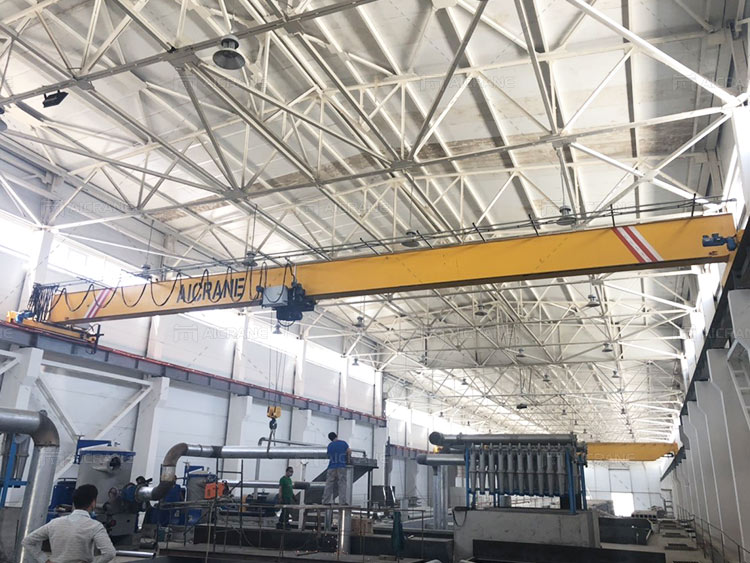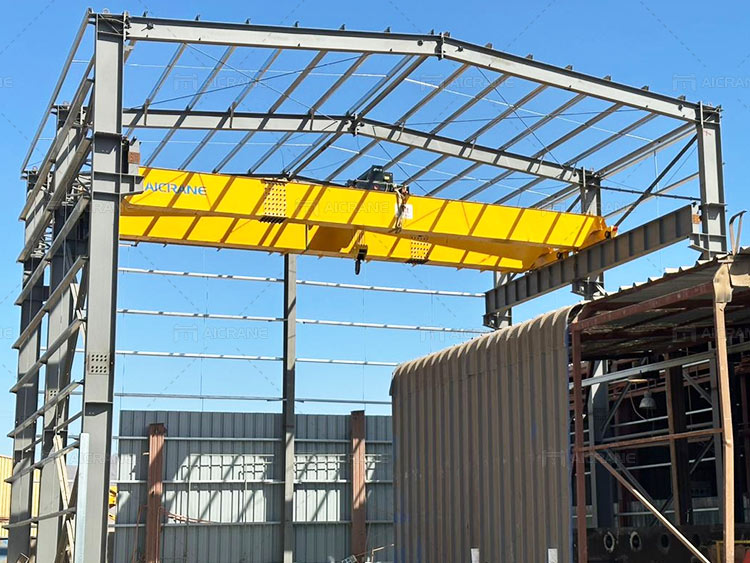Overhead cranes are integral pieces of equipment used in a wide variety of industries to lift, move, and place heavy loads. From warehouses to factories, these cranes are essential in maintaining a smooth and efficient workflow. One of the most critical factors in selecting an overhead crane is determining the appropriate lifting capacity. The capacity range of overhead cranes varies greatly, and choosing the right one for your specific needs is crucial for ensuring safety, maximizing efficiency, and minimizing operating costs.
In this article, we will discuss the different capacity ranges of overhead cranes, the factors to consider when selecting the right one, and how to determine the most suitable crane for your needs.

What is an Overhead Crane?
Before diving into the capacity ranges, let’s take a quick look at what an overhead crane is and how it works. An overhead crane for sale, also known as a bridge crane, is designed to move heavy loads across horizontal distances within a facility. It consists of a horizontal bridge that moves along tracks, supported by two rails, with a hoist that can move vertically and horizontally. Overhead cranes are often used in manufacturing plants, warehouses, shipping yards, construction sites, and other industries where heavy lifting is required.
Different Capacity Ranges of Overhead Cranes
Overhead cranes come in various capacity ranges, each designed to handle specific types of loads. The capacity of an overhead crane is typically measured in tons, and the lifting capacity determines how much weight the crane can safely handle. The capacity range of overhead cranes typically spans from as low as 1 ton to over 500 tons. Here’s a breakdown of the different capacity categories:
1. Light Duty Overhead Cranes (1 to 10 tons)
Light-duty overhead cranes are typically used in smaller operations or facilities where the lifting requirements are relatively low. These 1 ton to 10 ton bridge cranes are ideal for applications such as:
-
Small manufacturing plants: Lifting light materials or components, such as small machinery or products on assembly lines.
-
Warehouses: Handling goods, boxes, or pallets that are relatively lightweight.
-
Repair shops: Lifting smaller machinery or vehicles for maintenance.
Light-duty cranes are usually compact and come with simple control systems, which makes them more cost-effective for operations with minimal lifting requirements. Although their capacity is limited, they are versatile enough for use in various small-scale industries.
2. Medium Duty Overhead Cranes (10 to 50 tons)
Medium-duty overhead cranes are widely used in industries where moderate lifting capacity is required. These cranes are capable of handling heavier loads than light-duty cranes and are typically found in:
-
Automotive manufacturing: Lifting automotive parts, engines, or assembled vehicles.
-
Construction sites: Moving construction materials such as steel beams, concrete panels, or large tools.
-
Shipping and logistics: Loading and unloading containers or heavy pallets in warehouses.
These cranes are designed to meet the needs of industries that handle moderate-sized loads, offering a good balance of lifting capacity, durability, and flexibility.

3. Heavy Duty Overhead Cranes (50 to 100 tons)
Heavy-duty overhead cranes are commonly used in larger industrial settings where the demand for lifting capacity is high. These 50 ton to 100 ton bridge cranes are often designed to handle more substantial loads and can be found in industries such as:
-
Steel mills: Lifting large metal billets, ingots, or steel coils.
-
Shipyards: Moving massive ship components, such as hull sections or engines.
-
Power plants: Lifting heavy machinery or equipment used in energy generation.
Heavy-duty cranes are engineered for long-term reliability and high performance, capable of operating in challenging environments with a need for continuous and efficient material handling. These cranes often come with advanced features such as high-speed hoists, precise control systems, and enhanced safety features.
4. Extra Heavy Duty Overhead Cranes (100 tons and above)
For industries requiring extreme lifting power, extra heavy-duty overhead cranes come into play. These cranes are capable of lifting very large, heavy, and complex loads, and are used in specialized applications such as:
-
Heavy construction and infrastructure: Lifting massive construction components like concrete slabs, pre-cast beams, or heavy lifting equipment.
-
Power generation plants: Handling turbine components, generators, and other large equipment during construction or maintenance.
-
Shipbuilding: Moving heavy sections of ships, submersible components, or large industrial equipment.
Cranes in this category are often custom-designed to meet the specific needs of the project. They incorporate advanced safety measures and can be used in harsh, high-stakes environments.
Factors to Consider When Choosing the Right Crane Capacity
Selecting the right overhead crane capacity requires considering several key factors. These include:
1. Weight of the Loads to Be Lifted
The most obvious factor when determining the appropriate crane capacity is the weight of the heaviest load that the crane will need to handle. Overestimating the capacity may result in unnecessary costs, while underestimating it can cause safety issues or inefficiency. Make sure to factor in the maximum weight of your typical loads, as well as any potential future needs.
2. Lift Height and Reach
In addition to weight, the lift height and horizontal reach of the crane are critical considerations. The required lifting height will affect the choice of hoists and other components. Also, consider the space available for the crane’s track and whether it needs to span the entire width of a warehouse or factory floor.
3. Duty Cycle and Frequency of Use
The duty cycle refers to how often and how intensely the crane will be used. If the crane will operate continuously or in a high-demand environment, a crane with a higher duty classification (e.g., A5 or A6) may be necessary. It’s also essential to determine how frequently the crane will be used during each shift to ensure its design can handle such frequent operations without unnecessary wear and tear.
4. Environmental Conditions
The environment in which the crane will operate also plays a significant role in determining the appropriate capacity. For example, overhead cranes in outdoor environments like shipyards or construction sites need to be robust enough to handle weather-related challenges. Cranes operating in extreme conditions, such as high temperatures, corrosive environments, or dusty areas, may need additional protective features or materials to withstand those conditions.
5. Safety Considerations
Safety is paramount when choosing a crane, especially for heavy-duty lifting. Overhead cranes should be equipped with safety features such as load limiters, overload protection, anti-collision systems, and emergency stops to ensure the safety of both operators and the surrounding environment. It’s important to select a crane with a safety margin in its lifting capacity to account for sudden changes in load or unexpected forces.
6. Customization Options
Some operations may require customized features in their overhead cranes, such as specialized lifting hooks, extra-wide spans, or unique hoisting systems. Choosing a crane that can be customized to suit specific needs ensures that you get the most efficient and cost-effective solution.
Conclusion: Choosing the Right Overhead Crane Capacity
Selecting the right overhead crane for your operation can be a complex decision, but understanding the capacity range and how it aligns with your lifting needs is a crucial first step. By considering factors such as the weight and size of the loads, environmental conditions, duty cycles, and safety requirements, you can ensure that the crane you choose will meet your operational demands effectively and efficiently.
Whether you need a light-duty crane for a small workshop or a heavy-duty crane for a large-scale industrial operation, choosing the right lifting capacity ensures safety, reduces operating costs, and maximizes productivity. If you’re unsure about the appropriate crane for your needs, it’s always a good idea to consult with an expert or manufacturer who can help tailor a solution based on your specific requirements.
In the end, investing in the right custom overhead crane not only boosts operational efficiency but also ensures that your facility can handle heavy loads with maximum safety and minimal downtime.
